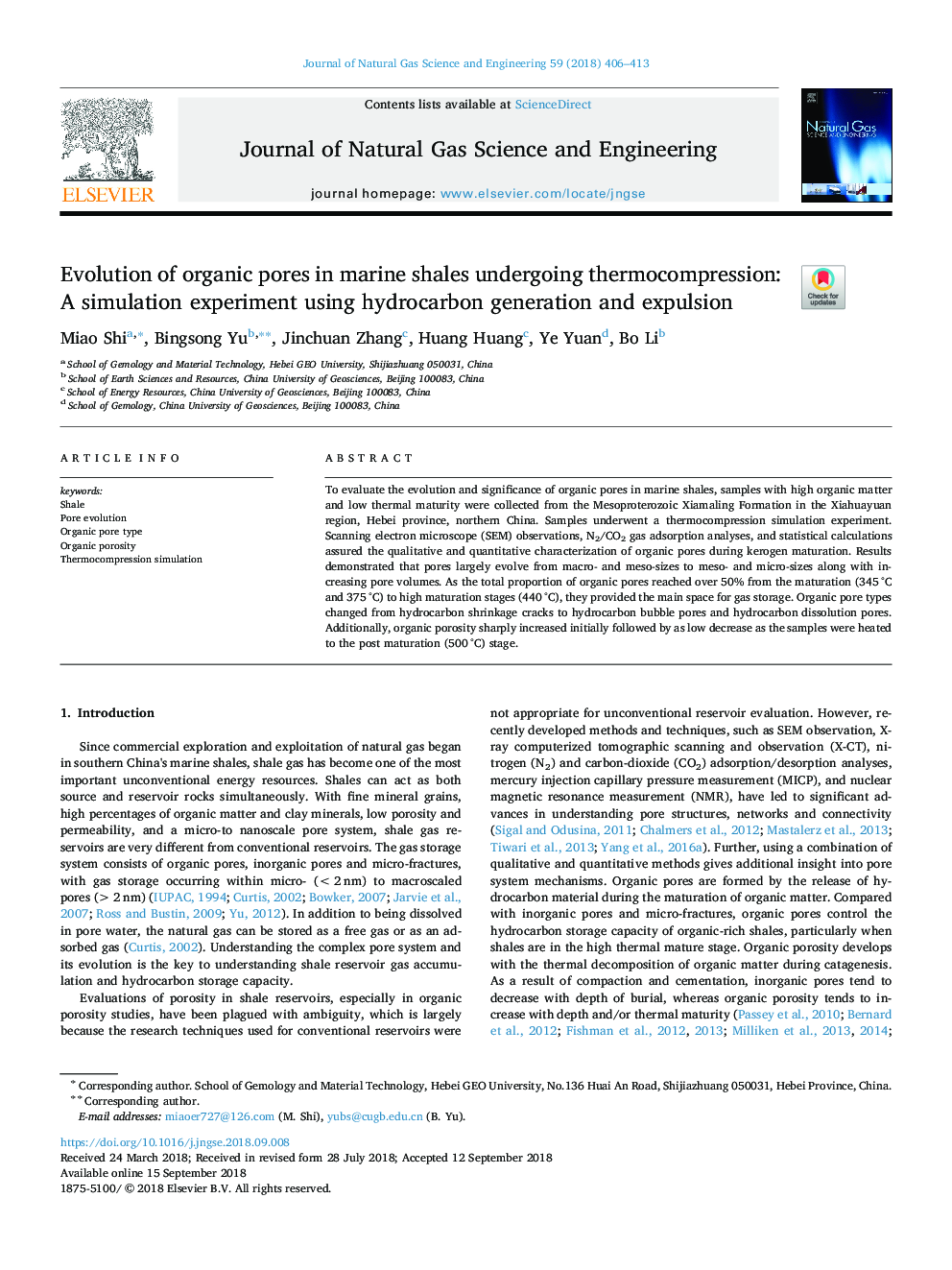| Article ID | Journal | Published Year | Pages | File Type |
|---|---|---|---|---|
| 11030993 | Journal of Natural Gas Science and Engineering | 2018 | 8 Pages |
Abstract
To evaluate the evolution and significance of organic pores in marine shales, samples with high organic matter and low thermal maturity were collected from the Mesoproterozoic Xiamaling Formation in the Xiahuayuan region, Hebei province, northern China. Samples underwent a thermocompression simulation experiment. Scanning electron microscope (SEM) observations, N2/CO2 gas adsorption analyses, and statistical calculations assured the qualitative and quantitative characterization of organic pores during kerogen maturation. Results demonstrated that pores largely evolve from macro- and meso-sizes to meso- and micro-sizes along with increasing pore volumes. As the total proportion of organic pores reached over 50% from the maturation (345â¯Â°C and 375â¯Â°C) to high maturation stages (440â¯Â°C), they provided the main space for gas storage. Organic pore types changed from hydrocarbon shrinkage cracks to hydrocarbon bubble pores and hydrocarbon dissolution pores. Additionally, organic porosity sharply increased initially followed by as low decrease as the samples were heated to the post maturation (500â¯Â°C) stage.
Keywords
Related Topics
Physical Sciences and Engineering
Earth and Planetary Sciences
Earth and Planetary Sciences (General)
Authors
Miao Shi, Bingsong Yu, Jinchuan Zhang, Huang Huang, Ye Yuan, Bo Li,
